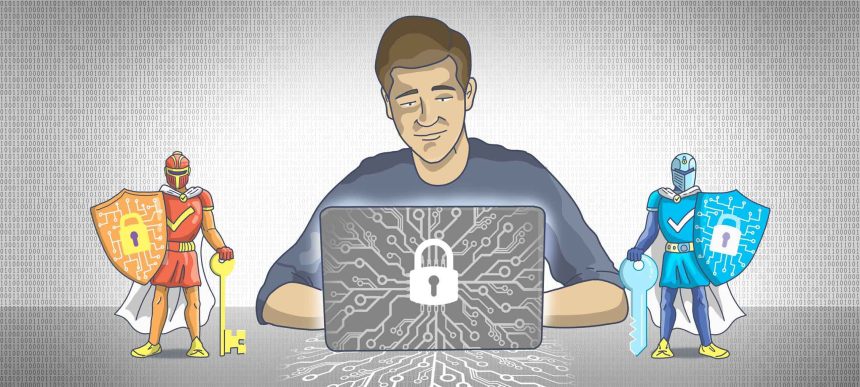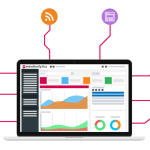You may protect yourself from online tracking and maintain your privacy while sharing it with others by making easy adjustments to your devices and accounts. This will enable you to share information with those you have not authorized to see it. It should be easy to put up a system that really works. The following is a list of easy tweaks to safeguard your identity and personal information better when using the Internet.
Strengthen Your Passwords
While creating your password, try to avoid using information that is easily guessed, such as your birthdate. Use strong passwords and change them often to avoid giving hackers any leads to protect yourself from online tracking. It’s not a good idea to use the same password across many websites, and a password manager can assist you to keep track of all of your different passwords.
Be Cautious on Social Media
Everyone has at least one buddy that shares an excessive quantity of private information on their many social media accounts. This is both an invasion of your privacy and a very bothersome intrusion into your life. It is essential to use caution when posting personally identifiable information online, such as your address, date of birth, and birthday, until you have determined who may see your postings by reviewing your privacy settings.
Exercise Caution with Free Wi-Fi
Doing part of your shopping online won’t hurt you in any way. Your online activities might be at risk if you use a free public Wi-Fi network since there will be no security safeguards in place to protect them. It is not a good idea to use your credit card while you are away from home or when you are connected to a private network that requires a password to access it.
Stay Alert with Links and Attachments
Phishing emails sent by cybercriminals are deceptively convincing because they are designed to seem like they came from well-known companies like your bank or utility provider. Examples of things that might be considered spam include misspelt words or an unusual email address.
Protect yourself from online tracking by verify Website Security
Always double-verify the URL in the address bar at the top of your browser before entering any personal information into a website. A safe website may be identified by the key or lock icon as well as the “https” protocol in the website’s address (URL). The presence of a privacy statement, a “certified secure” logo, and contact information are some more methods to establish whether or not a website may be trusted.
Consider Extra Protection
Be sure that you have a firewall, antivirus software, and tools that remove spyware installed on your computer. If you are worried about the safety of yourself and your loved ones in the event of a cyber-attack, consider purchasing cyber insurance. At Chubb, we have professionals available around the clock who can assess the level of cyber risk you face, help in the payment of false claims, and make sure that your loved ones get the appropriate support during this difficult time.
Monitor Mobile App Permissions
Using some mobile applications might compromise the safety of one’s data. Many will want access to your contacts, images, and GPS position, among other things, in order to download the program. On the other hand, permissions sometimes have something to do with how the software is supposed to work. When installing an application, it is recommended that you check out the permissions it requires and disable any features that make you feel uneasy. This is something that should be done for both newly downloaded apps and older ones.
Review Security and Privacy Settings
Since we’re talking about portable technology, it’s important to remember to set up your smartphone so that it locks itself while it’s not being used. If your phone is found, the person who does find it shouldn’t be able to access the information that’s on it. Fingerprint authentication is available on most modern smartphones, and it is strongly recommended that users use this feature rather than a password or swipe pattern. There needs to be uniformity across social networking sites when it comes to privacy and safety settings. It is essential to have a solid understanding of the information that is being gathered and shared via social media. If you use Facebook often, familiarize yourself with the privacy options that it offers. In a nutshell, it is a very effective data collector.
Use Strong Passphrases
As a result of the growth of the Internet of Things, a growing number of home automation devices, such as lights, appliances, systems, alarms, and controls, now include some computer technology (IoT). Hacking presents a challenge for devices that are linked to the Internet, including baby monitors, thermostats, and security cameras. The Internet of Things’ protection may be improved by implementing one or more of the following measures: Immediately replace the router’s factory default password with a passphrase, keep the firmware updated, and, if at all possible, cut the device off from the rest of the Internet. There is no need to make the process of guarding your online identity and personal information more complicated than it has to be. Yet, given the increasingly interconnected and digital nature of today’s society, each and every one of us is impacted by this issue.
Protect yourself from online tracking by using an antivirus
The presence of a virus or other potentially malicious software is possible. Your computer might get infected with ransomware, private information could be exposed, or an attack could be launched. Hackers search for weaknesses in software in an aggressive manner. For all the protection, you can use antivirus.
Prioritize Encryption
When you submit sensitive financial information, you should be sure the website can provide proof that it is protected. In order to do this, check that the URL or address bar is completed with an “s” rather than an “http” and that a reliable security lock symbol is shown. When you reach the page that asks for your credit card information, you will see that “http” has been replaced with “https,” which indicates that you are now in a safe environment. Simultaneously, a lock icon will show to the right of the address bar or to the left of your browser window. This indicates that the connection is secure. If you see these two indicators, you will be able to verify that the owner of the website receives your information in a safe and secure manner. Your private data, such as your name, address, phone number, and credit card number, will be kept in complete secrecy.
Careful of Phishing Schemes
The goal of a phishing scam is to trick you into exposing sensitive information by using a number of deceptive techniques, such as creating a website that seems identical to one that is legitimate. If you are aware of how to spot a phishing scam in its early stages, you may avoid falling for any of the several similar frauds that are now rampant on the Internet. Never download files from unsolicited emails or visit links included in them. This will help you avoid becoming a victim of phishing attempts and also protect yourself from online tracking. If someone approaches you with an offer of money, a position that you have never heard of before, or a request for a gift to a charity, they may be trying to steal your identity or your financial information.
About Author: The content is written by Maha. She has five years of experience in writing technology articles.














